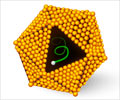Two new studies have found that a new imaging technique - magnetic resonance elastography (MRE) - is an accurate tool for non-invasive diagnosis of liver diseases
Two new studies have found that a new imaging technique - magnetic resonance elastography (MRE) - is an accurate tool for non-invasive diagnosis of liver diseases.
The studies were conducted by a team of researchers led by Richard Ehman at Mayo Clinic.As part of one study, researchers conducted MRE examinations of 57 individuals with chronic liver disease and 20 healthy volunteers.
The researchers found that MRE accurately detects fibrosis with high sensitivity and specificity. Researchers also found that steatosis, which is deposits of fatty acids and triglycerides in liver cells and a common condition in patients with liver disease, did not interfere with detection of fibrosis with MRE.
The second study was conducted to see whether MRE can accurately measure portal hypertension, or high blood pressure in the portal vein that carries blood from the digestive track to the liver, usually as a result of cirrhosis of the liver.
As part of the study, researchers studied MRE examinations of liver and spleen stiffness in 35 individuals with varying degrees of chronic liver disease and 12 healthy volunteers.
Researchers found that a highly significant correlation exists between liver and spleen stiffness in patients with portal hypertension. However, the validity of spleen stiffness as a non-invasive measure of portal venous pressure requires further study.
Advertisement
The findings of the study will be presented at the International Society for Magnetic Resonance in Medicine Annual Meeting in Berlin, Germany, and Digestive Disease Week 2007 in Washington, D.C.
Advertisement
LIN/L











